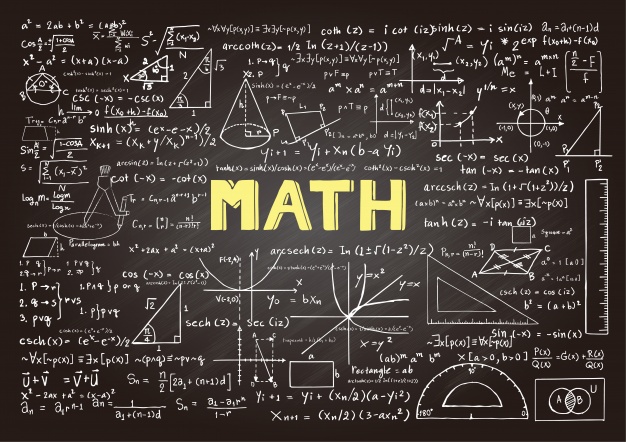Are you taking a college or high school math class? One of the areas you will cover is natural logs. So what exactly is a natural log? A natural log of any number is its logarithm to the base of e (mathematical constant); where e is a transcendental number that is approximately equal to 2.718281828459. Sounds complex, right? But it will no longer be complex when you understand natural log rules.
In this post, we are going to take a closer look at the most important natural log rules, highlight other natural log properties, and demonstrate how to apply them with examples. We will also demonstrate the difference between natural logs and other logarithms.
What is In in Natural Log Rules?
Natural log is also referred to as In. It is the inverse of e. Letter “e” is a math constant that is commonly referred to as a natural exponential. Notably, just like Pi (π) that has a constant value of 3.14159, e also has a fixed value of approximately 2.718281828459.
Where are In rules applied? e is used in many cases especially in mathematical scenarios such as decay equations, growth equations, and compound interest. Check the example below.
In(x) is the time required to grow to x, right? But ex denotes the quantity of growth that has been achieved after a specific period, x.
Notably, because e is applied in very many scenarios of math, physics, and economics, students take the logarithm featuring base e of a specific number to find a value. To put it differently, In was crafted as a shortcut for calculating log base e. It lets those reading a problem understand you are using the algorithm, taking base e, of a number. Let us demonstrate this using an example.
In(x) = loge(x).
Now, substitute the equation with a number: In(5) = loge(5) =1.609.
The Main Log Rules
When working with In in mathematics, there are four key natural logarithm rules that you need to understand. Here is a closer look at these rules:
-
Product Rule
When working on In of multiplication of y and x, the answer is the total (sum) of the In of y and In of x. When put in an equation, this rule looks like this; ln(y)( x) = ln(y) + ln(x).
Here is an example: ln(7)(5) = ln(7) + ln(5).
-
Quotient Rule
When working on the In of the division of y and x, the answer is the difference of the In of y and In of x. To demonstrate this in an equation, here is how it will look like; ln(y/x) = ln(y) – ln(x).
See the example below: ln(8/4) = ln(78) – ln(4).
- The reciprocal rule
Unlike in the quotient rule, the natural log of a reciprocal of a number, call it x, is the opposite of the In of x. When put in an equation, it appears like this; ln(1/x)=−ln(x).
Here are some demonstrations using an example; ln(⅓)= -ln(3).
-
Power Rule
When calculating the natural log of a number, call it x, raised to the power of y, you simply need to multiply y by In of x. In an equation, it will look like this; ln(xy) = y * ln(x).
Take the example; ln(52) = 2 * ln(5).
The Main Properties of Natural Log
On top of the natural log and e rules that we have looked at above, it is important to also appreciate that there are a number of properties you need to understand when studying or adding natural logs. And you know what? You need to memorize the properties of ln to make related calculations easy.
| Specific scenario | In property |
|---|---|
| ln of a Negative Number | The ln of any negative number is undefined |
| ln of 0 | ln(0) is undefined |
| ln of 1 | ln(1)=0 |
| ln of Infinity | ln(∞)= ∞ |
| ln of e | ln(e)=1 |
| ln of e raised to the x power | ln(ex) = x |
| e raised to the ln power | eln(x)=x |
Take a closer look at the above table. You will realize that the last three rows (e, f and g), In(e)=1. Note: this turns out right even when one is raised to the power of any other number. Why? Because the In and e in the rows serve as functions to each other.
Solving Problems in College Natural Log Problems
Now that we have looked at ln rules and ln properties, it is time to get down to solving real problems. Below, we take a closer look at natural log identities and related problems. Check how they are done and try to solve similar questions
-
Problem one: Can you solve ln (72/5).
To begin with, note we are going to use the quotient rule. This will get us, ln(72) – ln(5).
Second, we apply the power rule to get this, 2ln(7) -ln(5).
Having calculated the equation up to this point, we can leave it that way. But you can also go ahead and use a calculator to get a specific answer, 2(1.946) – 1.609 = 2.283.
-
Problem two: Can you calculate ln (5x-6)=2.
When you get an equation featuring multiple variables in the parenthesis, the first thing is making e your base, right? Then, everything else should be considered exponent of e. Move on and put In and e next to each other. Here is a demonstration.
From the natural log laws, we know that eln(x)=x.
Therefore, the equation will look like this, eln(5x-6)=e2.
Because we also know eln(x)=x, eln(5x-6)= 5x-6, it implies that 5x-6= e2.
Also from the e^ln rules, we know that e is a constant. Therefore, we can easily establish the value of e2. We can do this by using a calculator or e’s value.
Have a look:
5x-6 =7.389
Then, we would add six to each side of the equation to get;
5x= 13.389
And, finally, divide both sides by number five;
x= 2.678
The Differences between Natural Logs and Logarithms in College Math
To get it right on ln and e rules, it is also important to understand that natural logs are different from algorithms. When you take any logarithm, it is the opposite of its power. Therefore, the main difference between logarithms and natural logs is the base you apply. Logarithms always use a base 10 but natural logs take a base of e. But you can also convert each to the other using the following equations:
log10(x) = ln(x) / ln(10)
ln(x) = log10(x) / log10(e)
To demonstrate the differences even more effectively, we will list the rules of logarithms and rules of natural logs in a table. Have a look:
|
In Rules |
Logarithm rules |
|
|
Summary of Rules and Properties of ln and e
The main thing that we have demonstrated in this post is that In or natural log, is the inverse of e. While you might see them difficult at first, they are not as complex after understanding the rules. We also demonstrated that the primary difference between logarithms and natural logs is the base. This can simply your ability to do math homework, especially when face with these issues and algebra rules. If not, there are other options.
e^ln Rules Are Not That Hard
If you are finding calculations related to natural logs complex, there is no need to stress yourself. Go ahead and use professional math help. We provide the best online assignment help, so we can solve any of your math problems. Then, practice more to understand the properties of In and e and associated problems. With time, you will understand and natural logs will be fun!



